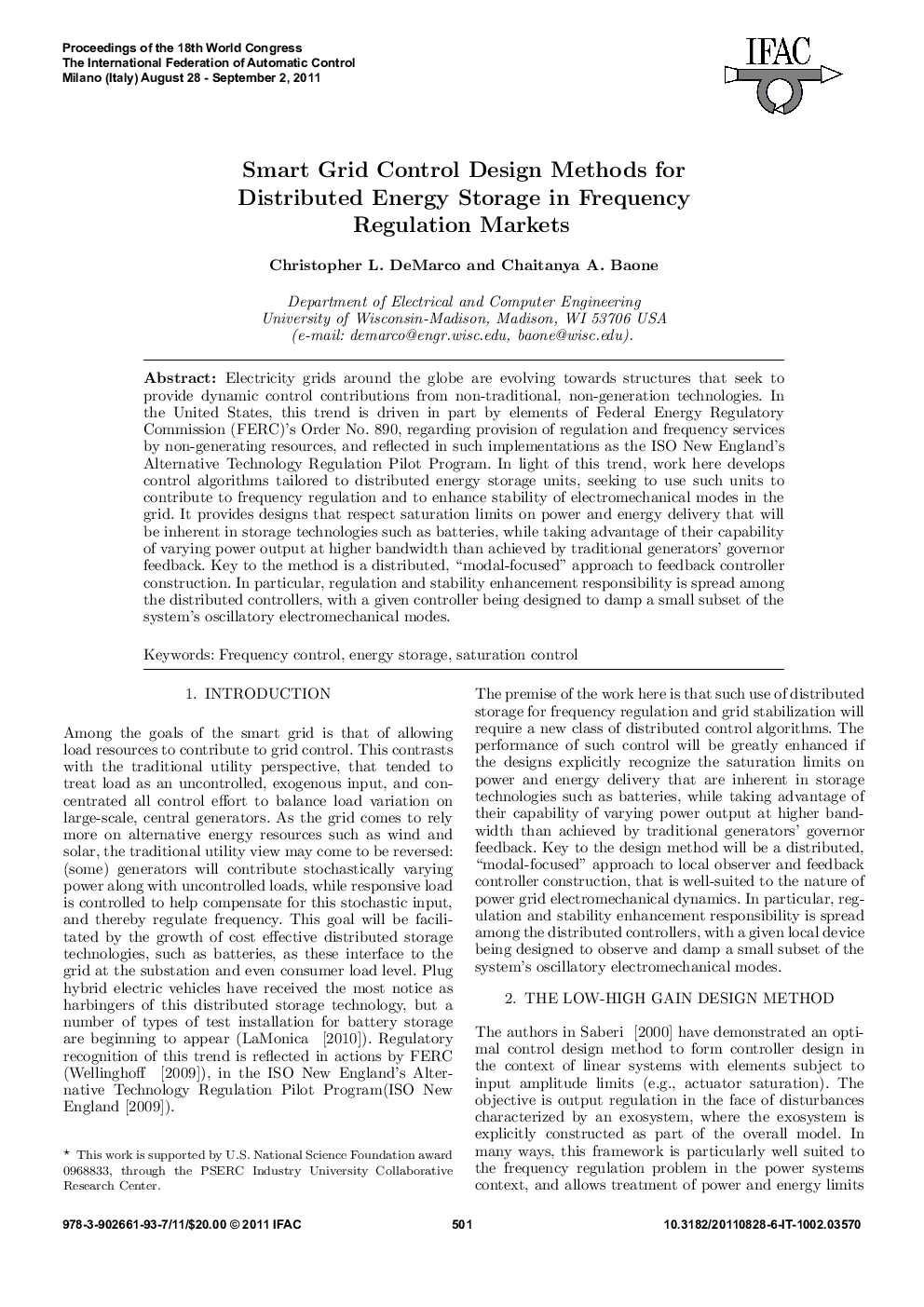| Article ID | Journal | Published Year | Pages | File Type |
|---|---|---|---|---|
| 718734 | IFAC Proceedings Volumes | 2011 | 6 Pages |
Electricity grids around the globe are evolving towards structures that seek to provide dynamic control contributions from non-traditional, non-generation technologies. In the United States, this trend is driven in part by elements of Federal Energy Regulatory Commission (FERC)'s Order No. 890, regarding provision of regulation and frequency services by non-generating resources, and reflected in such implementations as the ISO New England's Alternative Technology Regulation Pilot Program. In light of this trend, work here develops control algorithms tailored to distributed energy storage units, seeking to use such units to contribute to frequency regulation and to enhance stability of electromechanical modes in the grid. It provides designs that respect saturation limits on power and energy delivery that will be inherent in storage technologies such as batteries, while taking advantage of their capability of varying power output at higher bandwidth than achieved by traditional generators’ governor feedback. Key to the method is a distributed, “modal-focused” approach to feedback controller construction. In particular, regulation and stability enhancement responsibility is spread among the distributed controllers, with a given controller being designed to damp a small subset of the system's oscillatory electromechanical modes.
